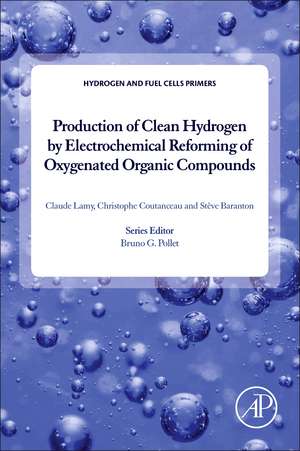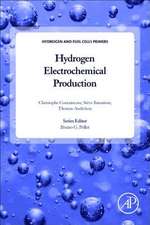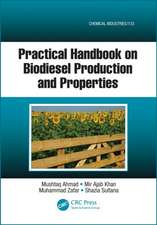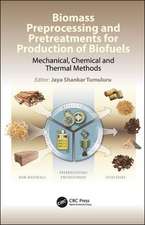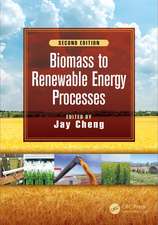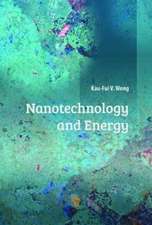Production of Clean Hydrogen by Electrochemical Reforming of Oxygenated Organic Compounds: Hydrogen and Fuel Cells Primers
Autor Claude Lamy, Christophe Coutanceau, Steve Barantonen Limba Engleză Paperback – 26 noi 2019
By exploring the link between organic oxidation/conversion to hydrogen production, this book fills a gap in the existing literature and provides researchers in the field with an authoritative and comprehensive reference they can use when developing new sustainable processes and systems for hydrogen production.
- Explores, in detail, the decomposition process of organic compounds leading to hydrogen
- Presents foundational information, practical insights and pathways for future work in the development of proton exchange membrane electrolysis cell systems
- Includes results, experimental data and interpretations using different organic compounds, such as methanol, formic acid, ethanol, glycerol and biomass
Preț: 859.12 lei
Preț vechi: 1186.45 lei
-28% Nou
Puncte Express: 1289
Preț estimativ în valută:
164.38€ • 171.65$ • 135.75£
164.38€ • 171.65$ • 135.75£
Carte tipărită la comandă
Livrare economică 08-22 aprilie
Preluare comenzi: 021 569.72.76
Specificații
ISBN-13: 9780128215005
ISBN-10: 0128215003
Pagini: 132
Dimensiuni: 152 x 229 x 16 mm
Greutate: 0.19 kg
Editura: ELSEVIER SCIENCE
Seria Hydrogen and Fuel Cells Primers
ISBN-10: 0128215003
Pagini: 132
Dimensiuni: 152 x 229 x 16 mm
Greutate: 0.19 kg
Editura: ELSEVIER SCIENCE
Seria Hydrogen and Fuel Cells Primers
Public țintă
Energy engineering researchers, PhD level graduate students and industry professionals in the fields of hydrogen energy, bioenergy and energy systems.Cuprins
1. Introduction2. Principle of hydrogen production by the electrocatalytic oxidation of organic compounds in a Proton Exchange Membrane Electrolysis Cell3. Experimental part4. Production of hydrogen by the electrocatalytic oxidation of low weight compounds (HCOOH, MeOH, EtOH)5. Production of hydrogen by the electrocatalytic oxidation of compounds derived from the biomass (glycerol, glucose)6. Conclusions
